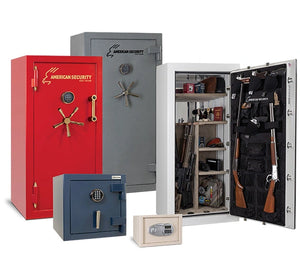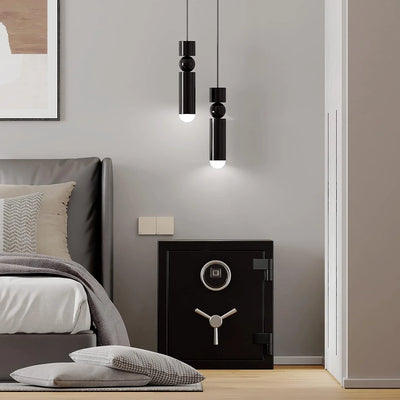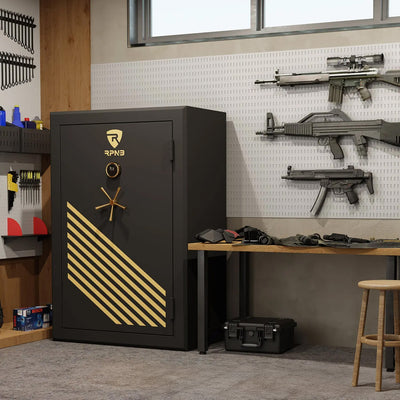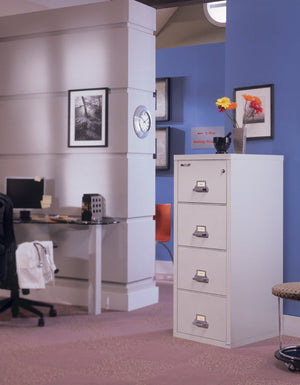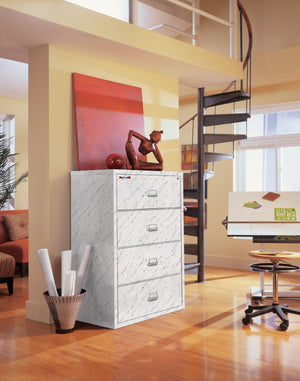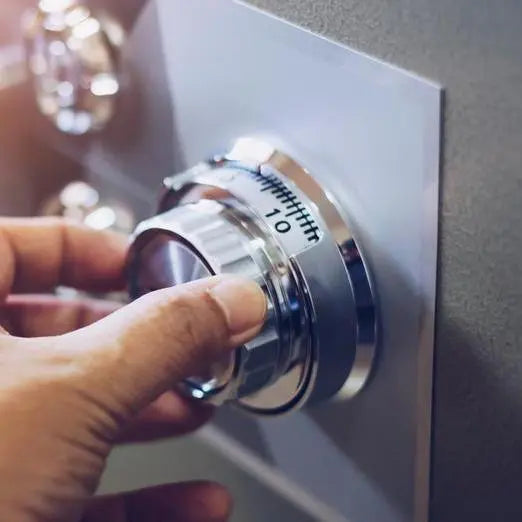
Mastering the Art of Safe Buying: NationwideSafes.com Reveals the Top 9 Mistakes to Avoid
The journey to secure your valuables begins with a crucial decision: purchasing a safe. While this decision is significant, it's often fraught with common errors due to a lack of comprehensive, quality information. NationwideSafes.com is here to guide you through these potential pitfalls, ensuring you make the most informed choice possible.
1. The Illusion of Large Bolts: False Security
Many safes on the market project a false sense of security with their large bolts. At first glance, these bolts may seem to promise robust protection. However, it's essential to look beyond this surface-level feature. Despite their imposing appearance, these safes may be lightweight, made with plastic components, and lack the necessary burglary resistance, leaving you with unmet safety expectations.
In reality, the weight and construction material of a safe are often more indicative of its security level than the size of its bolts. Heavier safes, particularly those made with more steel and concrete, tend to provide better protection against burglary attempts. Steel offers robust resistance against drilling and cutting, while concrete (often used in composite safes) provides excellent fire resistance and added weight to deter theft. Other indications of a more secure safe include one of more re-locker bolts, a glass relocker, and hardened steel plate in the door.
Therefore, when choosing a safe, it's crucial not to be swayed by the illusion of large bolts. Instead, consider the safe's weight, its construction material, and its security features. A heavier safe made of more steel and concrete will typically offer better security and peace of mind. Remember, the promise of safety should not just be an illusion but a reality.
2. Location, Location, Location: The Importance of Proper Placement
The placement of your safe is a critical factor in its effectiveness. Buyers often prioritize convenience, choosing locations that undermine the safe's protection capabilities. Choosing a discreet location with a concrete floor can significantly enhance the security of your safe. Concrete floors provide a robust foundation that allows for secure bolting of the safe, making it difficult for potential thieves to remove. Therefore, when deciding where to place your safe, choose a location that is discreet and consider the floor material. A location with a concrete floor will not only ensure that your safe can be securely bolted down and make it more difficult for a would-be thief to remove, providing you with enhanced security and peace of mind.
3. One Lock, Many Users: The Risk of Shared Access
Businesses and organizations often face challenges when selecting lock types. Using physical keys or single-user locks, such as dial combination locks or 1-user electronic locks in a multi-user environment can unintentionally create security risks, such as shared keys or codes.
When multiple individuals need access to a safe, it's crucial to consider a lock that supports multiple unique codes. This allows each user to have their own access code, eliminating the need for code-sharing. Code-sharing can lead to security vulnerabilities, as it's difficult to control who knows the code and how widely it's shared.
Electronic locks often support multiple codes, making them an excellent choice for multi-user environments. They also provide the added benefit of being able to easily change or delete individual codes as needed, such as when an employee leaves the company or a code is suspected of being compromised. Some commercial electronics locks support audit trail records, which can be very useful in some circumstances.
Therefore, when choosing a safe, consider how many people will need access and select a lock that can accommodate this. By ensuring each user has their own unique code, you can significantly enhance the security of your safe and protect your valuables more effectively.
4. Size Matters: Understanding Safe Dimensions
There's often confusion surrounding industry standards for safe dimensions. The depth dimension of safes is typically quoted in nominal terms - without considering the extra depth space taken by the lock, handle, and hinges. Overlooking this detail can lead to underestimating the safe's actual physical requirements.
As a rule of thumb, for most safes, you should allow an additional 2 inches of depth to account for the projection of the safe's lock, handle, and hinges. This extra depth ensures that these components won't interfere with the surrounding area, allowing for smooth operation of the safe.
For larger safes, particularly those with 3 or 5-spoke handles, it may be necessary to allow an extra 3 inches of depth. These larger handles and locks can project further from the safe's body, requiring more clearance to operate effectively.
Therefore, when choosing a safe, it's important to consider not just the quoted dimensions of the safe itself, but also the additional space required for the lock, handle, and hinges. By doing so, you can ensure that the safe will fit comfortably in your chosen location and operate as intended, providing you with easy access to your valuables when you need it.
5. Misuse of Drop Safes: Temporary vs. Long-term Storage
Businesses sometimes misuse drop safes by storing large amounts of cash overnight. However, these safes are designed for temporary storage, not for the long-term security of significant sums.
Drop safes are typically used in businesses where cash needs to be securely stored throughout the day, such as in retail or restaurant settings. They allow employees to deposit cash or valuable items into the safe without needing to open it, reducing the risk of theft during operating hours.
However, for overnight storage of significant amounts of cash, a more robust solution is required. Heavier fire and burglary safes are designed for this purpose. They offer enhanced protection against both theft and fire, making them a safer choice for storing large sums of cash or other valuable items for extended periods.
Therefore, when considering your safe storage needs, it's important to match the type of safe to the task at hand. Use drop safes for temporary storage during business hours, and invest in a heavier fire and burglary safe an in-floor safe, for secure overnight storage. Alternatively, arrange more frequent armored car pickups to reduce cash on hand. By doing so, you can ensure that your cash and valuables are adequately protected at all times.
6. One Size Doesn't Fit All: Recognizing the Purpose of Different Safes
NationwideSafes.com empowers consumers by providing knowledge about the various types of safes, each designed for a specific purpose. Understanding these differences can significantly improve the effectiveness of your chosen solution. For instance, some safes are highly fire-resistant, making them excellent choices for protecting important documents from fire damage. Small fire-resistant boxes fall into this category. However, while these products excel in fire protection, they offer virtually no protection against burglary. They are designed to withstand high temperatures, not to resist forced entry.
On the other hand, some safes are designed with burglary resistance as their primary feature. B-rated money chests are built to withstand attempts at forced entry, with features such as a ½” steel plate door, complex locks, and relocking devices. However, the primary purpose of these safes is to protect cash drawers from burglary. As such, these safes do not provide fire protection.
Then there are safes that strike a balance between fire and burglary resistance. These safes offer a degree of protection against both fire and forced entry, making them a versatile choice for those who need to protect their valuables from a range of threats.
Each safe has its purpose. One is not “better” than another in absolute terms. It depends on the usage context.
Therefore, when choosing a safe, it's important to consider what you need to protect and from what threats. Each safe is designed with a specific purpose in mind, and what works well for one purpose may not work as well for another. By understanding the purpose of different safes, you can choose the one that best meets your specific needs.
7. The Trade-Off Between Price and Quality
In the world of safes, price and quality are directly related. More expensive safes are typically made of more durable and higher-quality materials, and they are fitted with more reliable locks that are designed to last a lifetime.
These high-quality safes offer enhanced protection against both fire and burglary, and they are built to withstand the test of time. They are an investment in the security of your valuables, providing peace of mind and reliable protection for years to come.
In contrast, cheaper, mass-market alternatives often cut corners where it matters most. They may be made of less durable materials, fitted with lower-quality locks, and lack the robust construction of more expensive safes. This can lead to problems down the road, such as locks that break down and cannot be replaced, and safes that become damaged and need to be replaced entirely.
While these cheaper safes may seem like a bargain at first, if used for the wrong purpose, they can end up costing more in the long run. As the saying goes, 'you can only go cheap for so long before it gets to be too expensive.'
Therefore, when choosing a safe, it's important to consider the trade-off between price and quality. Investing in a more expensive, high-quality safe can provide better protection and reliability, saving you money and hassle in the long run.
8. Securing Your Safe: The Crucial Role of Anchoring
One often overlooked aspect of safe installation is the importance of anchoring the safe to the floor. Unanchored safes, particularly those weighing less than 750 lbs., can be stolen or moved, leading to a total compromise of their protective function. For safes weighing more than 750 lbs., the weight alone is generally considered a sufficient deterrent, although bolting can still provide an additional layer of security.
The type of floor to which you anchor your safe can significantly impact its security. Concrete floors offer the most secure anchoring solution. By bolting your safe to a concrete floor, you can greatly enhance its security, making it exceedingly difficult for potential thieves to remove or access.
In situations where a concrete floor is not available, it's important to carefully select an anchoring location that allows for bolting the safe to a floor joist. This ensures that the safe remains securely anchored, providing a level of security that's second only to concrete floors.
Therefore, when installing your safe, the importance of anchoring it properly cannot be overstated. Whenever possible, opt for a location with a concrete floor for the most secure anchoring outcome. By doing so, you can significantly boost the security of your safe and ensure that your valuables receive the highest level of protection.
9. Regular Maintenance: The Key to Longevity and Effectiveness
Overlooking maintenance needs can result in issues that undermine your safe's performance and lifespan. Regular upkeep is essential for maintaining the optimal functioning of your safe.
A crucial part of maintenance is the routine replacement of the batteries that power the lock's keypad. Under normal usage conditions, it's advisable to replace the batteries approximately once a year. This practice ensures the lock's consistent and reliable operation, preventing inconvenient and potentially risky lockouts.
Humidity management within the safe is another vital maintenance task, especially for fire-resistant safes situated in locations prone to significant temperature or humidity fluctuations. It's recommended to periodically air out the safe and recharge or replace any portable humidifiers or desiccants stored within. This proactive approach helps avert problems such as mold growth and potential damage to the items safeguarded in the safe.
Therefore, as a safe owner, it's important not to underestimate the value of regular maintenance. By annually replacing the batteries and effectively managing the safe's internal humidity, you can ensure your safe continues to function efficiently and safeguard your valuables for many years to come.


